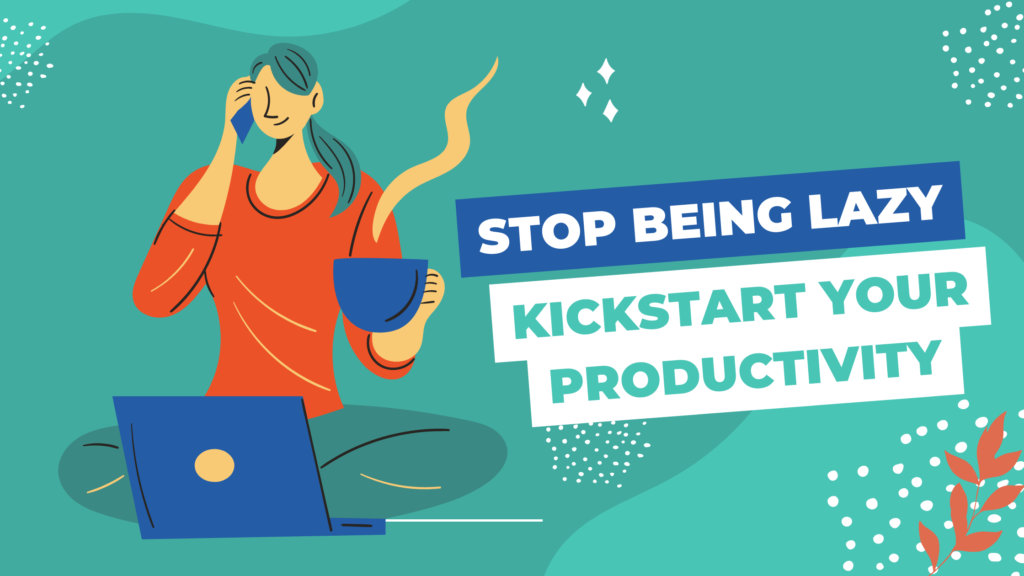Feeling Drained? It’s More Than Just Sleep! Discover 7 Types of Rest for Total Wellbeing
Are you feeling worn out, overwhelmed, or on the verge of burnout? You’re not alone! Our busy lives often leave little room for rest, but it’s the key to feeling your best.
This article dives into the importance of rest beyond just sleep. We’ll explore 7 types of rest you need to truly recharge and thrive.
Why Prioritize Rest?
Even if you’re chasing goals at full speed, proper rest is crucial for good health. It helps you manage stress, fight illness, and recover from daily demands. Research shows sleep plays a vital role in emotional control, memory, energy levels, cell function, and even removing waste products.
Interestingly, studies show that getting enough rest makes you more productive, not less. So, if you’re still exhausted despite sleeping, there’s more to the story.
Rest is Like Comfort: Beyond Sleep
Research by nurses suggests rest is similar to comfort. It’s a state of relief from problems and pain, achieved through various means:
- Physical Rest: Easing discomfort from illness or injury.
- Mental Rest: Managing stress and anxiety.
- Emotional Rest: Addressing emotional distress.
- Social Rest: Finding space from draining relationships or family issues.
- Sensory Rest: Reducing exposure to overwhelming sights, sounds, or information.
By learning how to incorporate these different types of rest, you can unlock true well-being and feel your best every day.
7 Types of Rest: Recharge Your Mind, Body, and Spirit
Feeling worn out, overwhelmed, or on the brink of burnout? You’re not alone. In today’s fast-paced world, prioritizing rest can feel impossible. But Dr. Saundra Dalton-Smith, a renowned wellness expert, offers a powerful solution: understanding the 7 types of rest you need for true well-being.
1. Physical Rest: Recharge Your Body
This might seem like a no-brainer, but physical rest goes beyond just getting enough sleep (although that’s crucial!). While a good night’s rest is essential for feeling rejuvenated, many of us struggle with sleep disturbances or simply don’t get enough quality shut-eye. To promote deeper sleep, explore relaxation techniques like meditation or gentle yoga stretches before bed. Taking a warm bath can also help ease tension and prepare you for restful sleep.
If you still find yourself struggling, consider incorporating calming scents like lavender into your bedtime routine or using natural relaxation sprays. Don’t hesitate to talk to a healthcare professional if sleep problems persist – they can help rule out any underlying medical conditions.
Beyond Sleep: Active Recovery for Physical Wellbeing
Physical rest isn’t just about lying down. Active processes like a relaxing massage, gentle stretching exercises, or a yoga class can also help your body recover and improve circulation. Many people find that simply soaking in a warm bath promotes feelings of physical rest and relaxation.

2. Mental Rest: Give Your Brain a Break
Feeling bogged down by work worries, intrusive thoughts, or that never-ending to-do list? You’re not alone. Mental rest is just as crucial as physical rest for overall well-being, but achieving it doesn’t always require a luxurious spa getaway. Here are some practical ways to incorporate mental rest into your daily routine:
Short Breaks, Big Impact:
Instead of powering through tasks until you’re brain-fried, schedule mini-breaks every 2 hours. These don’t have to be elaborate – a simple 5-to-10-minute break is enough. Step away from your desk, take a walk around the office or your garden, grab a healthy snack, or make a refreshing drink. This brief downtime allows your brain to reset and refocus, leaving you feeling more energized when you return to the task at hand.
The Pomodoro Powerhouse:
Many people swear by the Pomodoro Technique for boosting productivity. This method involves working in focused 25-minute sprints followed by short 5-minute breaks. After completing four cycles, take a longer 20-to-30-minute break to truly allow your mind to recharge. Dividing tasks into these manageable chunks promotes mental rest and keeps you laser-focused throughout the workday.
Delegate and De-Stress:
Feeling overwhelmed by a heavy workload? Don’t be afraid to ask for help! Juggling career demands, childcare, and home management can be mentally taxing. Delegate tasks whenever possible, whether it’s at work or at home. Sharing the load reduces stress and creates more time for mental rest.
Saying No for Self-Care:
Prioritizing your mental health is key to preventing burnout. There will be times when you need to take a mental health day to recharge. It’s also perfectly acceptable to say “no” to requests that drain your energy. Don’t feel guilty about setting boundaries and prioritizing activities you enjoy. These moments of self-care are essential for maintaining mental well-being.
By incorporating these simple strategies into your daily routine, you can give your mind the breaks it craves and experience the benefits of mental rest – improved focus, increased productivity, and a happier, healthier you!
3. Sensory Rest: Escape the Overwhelm
Ever feel drained after a long day filled with screens, calls, and constant stimulation? You’re not alone! Our modern world bombards us with sensory input 24/7, from computer screens and smartphones to artificial lighting and countless conversations. While it might not seem like it in the moment, this sensory overload can be incredibly exhausting.
The good news? You can learn to recognize the signs and give your senses a much-needed break with sensory rest. Here’s how:
Tune Out the Noise:
Developing self-awareness is key. Notice how you feel after a long Zoom call or a night scrolling through social media. Does your head pound, or do you find it hard to focus? These are signs of sensory overload.
Instead of reaching for your phone again, give your eyes and brain a break. Close your eyes for a few minutes, take a few deep breaths, or step outside for some fresh air. Even a short break can help you de-stimulate and recharge.
Power Down Before Bed:
The blue light emitted by electronic screens can disrupt your sleep cycle. To promote better sleep and sensory rest, avoid watching TV or using your phone for at least an hour before bedtime.
Invest in blackout curtains or an eye mask to block out light distractions during sleep. This creates a calmer environment for your senses, allowing you to unwind and drift off to sleep more easily.
Reconnect with Your Senses:
Sensory overload can make you numb to the world around you. But your senses are powerful tools for relaxation and enjoyment!
Treat yourself to a sensory experience you truly enjoy. Listen to calming music that soothes your soul. Savor a delicious, healthy meal, paying attention to the taste and texture of each bite. Light a scented candle and breathe in its relaxing aroma.
By consciously engaging with positive sensory experiences, you can counteract the negative effects of overload and create a more peaceful and restorative environment for your mind and body.
Remember, sensory rest isn’t about shutting out the world entirely. It’s about being mindful of your sensory experience and creating a balance between stimulation and relaxation. By incorporating these tips into your daily routine, you can give your senses a break and feel refreshed and recharged.
4. Creative Rest: Rekindle Your Spark
Feeling uninspired? Stuck in a rut at work or home? You might be neglecting an essential type of rest: creative rest.
Just like your body and mind need downtime to recharge, so too does your creativity. When you’re constantly bombarded with deadlines and responsibilities, that spark of inspiration can easily dim. But don’t worry, there are ways to rekindle your creative fire!
Exposing Yourself to New Things is Key
Imagine working in a sterile, white office with nothing to stimulate your mind. Not exactly the recipe for creative breakthroughs, right? Surround yourself with things that inspire you. Add a pop of color with some plants, decorate your workspace with inspiring artwork, or put up photos of dream vacation destinations.
Sometimes, “Dull” Just Means “Starving Your Creativity”
We often blame a lack of energy for feeling unmotivated. But sometimes, the culprit is a deeper creative hunger. If you find yourself lacking the drive to do much at all, it’s time to find your spark.
Rediscover Your Passions: It’s Time for an Adventure!
Remember that feeling of excitement after a challenging hike or the thrill of exploring a new city? Those experiences can be powerful sources of creative renewal. Dust off your hiking boots and plan a weekend getaway. Immersing yourself in nature or exploring new places can reignite your passion and bring fresh perspectives to your life.
The Joys of Creative Expression: Find Your Outlet
Creative rest isn’t limited to grand adventures. It’s about engaging in activities that allow you to express yourself freely. Maybe you used to love dancing, but haven’t put on your dancing shoes in years. Or perhaps you have a box of paints tucked away in the closet.
Rediscover the joy of creative pursuits – dancing, painting, singing, writing, sewing, crafting – the possibilities are endless! Learning a new skill can also be a fantastic way to ignite your creativity. Take a pottery class, explore photography, or even delve into a new language. Stepping outside your comfort zone and engaging in these activities can bring fresh energy to your life and help you see the world in new and exciting ways.
By incorporating creative rest into your life, you’ll find yourself feeling more inspired, motivated, and ready to tackle any challenge that comes your way. So go ahead, explore, experiment, and unleash your inner creative genius!
5. Emotional Rest: Prioritize Your Wellbeing
Knowing when you need emotional rest is crucial for maintaining good mental health. It’s about acknowledging your own needs and feelings and being honest with yourself and others. This means learning to express your emotions openly and setting healthy boundaries.
Here’s why emotional rest matters:
- Bottling Up Emotions Takes a Toll: Suppressing your feelings can lead to stress, anxiety, and even burnout. Emotional rest allows you to process your feelings healthily, preventing them from building up and causing problems.
- Setting Boundaries is Self-Care: Constantly saying “yes” to everyone’s requests can leave you feeling drained and emotionally exhausted. As your self-awareness improves, you’ll better understand your limits. It becomes okay to decline requests that would stretch you too thin, politely explaining that you’re already at full capacity.
Finding Tools for Emotional Release:
There are several ways to achieve emotional rest and process your feelings:
- Journaling: Writing down your thoughts and feelings can be a powerful tool for self-discovery and emotional release. It allows you to explore your emotions in a safe space and gain clarity on what’s bothering you.
- Talking it Out: Talking to a trusted friend or therapist can be incredibly helpful in processing difficult emotions. Sharing your feelings with someone who listens without judgment can provide valuable support and different perspectives.
- Therapy: Therapy can be a valuable resource for learning healthy coping mechanisms and developing stronger emotional resilience. A therapist can guide you in understanding and managing your emotions, leading to greater emotional well-being.

By prioritizing emotional rest and taking care of your mental health, you’ll create a stronger foundation for overall well-being and happiness. You’ll be better equipped to handle life’s challenges and navigate stressful situations with greater ease.
6. Social Rest: Choose Your Energy
Social rest goes hand-in-hand with emotional rest. It’s about taking a break from draining or demanding relationships that zap your energy. We all know those people: the constant complainers, the drama queens, or those who leave you feeling emotionally depleted after an interaction. These “toxic people,” along with people in crisis or with a negative outlook, can inadvertently drag you down and leave you feeling emotionally exhausted.
Identify Your Energy Vampires:
The first step to social rest is recognizing the relationships that drain you. Listen to your gut. Does spending time with someone leave you feeling stressed, anxious, or emotionally wiped out? Do you find yourself constantly walking on eggshells or feeling like you have to fix their problems? These are signs you might be dealing with an energy vampire.
Take a Break and Seek Support:
If you have a toxic relationship in your life, it’s okay to take a break. You don’t have to cut them off completely, but limiting contact can be a healthy way to protect your own well-being. Instead, focus on nurturing supportive and meaningful connections. Surround yourself with people who uplift you, inspire you, and make you feel good.
Quality Over Quantity:
Social rest doesn’t mean isolating yourself completely. It’s about finding the right balance. If your social calendar has been overflowing, don’t be afraid to clear some space for yourself. Recharge your batteries with some alone time, or use this time to catch up on sleep, and hobbies, or simply relax.
Focus on Quality Time:
When you do socialize, make it count! Instead of packing your schedule with shallow interactions, focus on spending quality time with loved ones. Plan activities you genuinely enjoy together, have meaningful conversations and create positive memories.
By prioritizing social rest and cultivating positive social connections, you can create a support network that energizes you and contributes to your overall well-being.
7. Spiritual Rest: Find Your Purpose
Spiritual rest goes beyond religion, although prayer and religious connection can be powerful sources of it for many. It’s about finding a deeper sense of purpose and meaning in life and feeling connected to something bigger than yourself.
Finding Your Path to Spiritual Rest:
- Religious practices: For those who find solace in religion, prayer, attending services, or participating in religious activities can be deeply restorative.
- Connecting with nature: Spending time in nature can be incredibly grounding and promote spiritual growth. Take a walk in the park, hike in the woods, or simply sit outside and observe the beauty of the world around you.
- Meditation and mindfulness: Meditation helps quiet the mind and cultivate inner peace. There are numerous guided meditation apps available to help you get started. By practicing mindfulness, you become more present in the moment and appreciate the world around you.
Journaling for Self-Discovery:
Journaling is a fantastic tool for spiritual rest and self-discovery. Regularly documenting your thoughts and feelings allows you to:
- Gain self-awareness: By reflecting on your experiences, you can identify your strengths, weaknesses, and values.
- Explore your purpose: Journaling can help you delve deeper into what truly matters to you and what you want to achieve in life.
- Make meaningful decisions: Understanding your values and aspirations empowers you to make choices aligned with your purpose, leading to a more fulfilling life.
Remember, spiritual rest is a personal journey. There’s no “right” way to achieve it. Explore different practices and find what resonates most with you. By connecting with something bigger, whether it’s nature, a higher power, or your own sense of purpose, you’ll cultivate a sense of peace and fulfillment that contributes to overall well-being.
By incorporating these 7 types of rest into your daily routine, you can combat burnout, improve your overall health, and feel your best – mind, body, and spirit.




